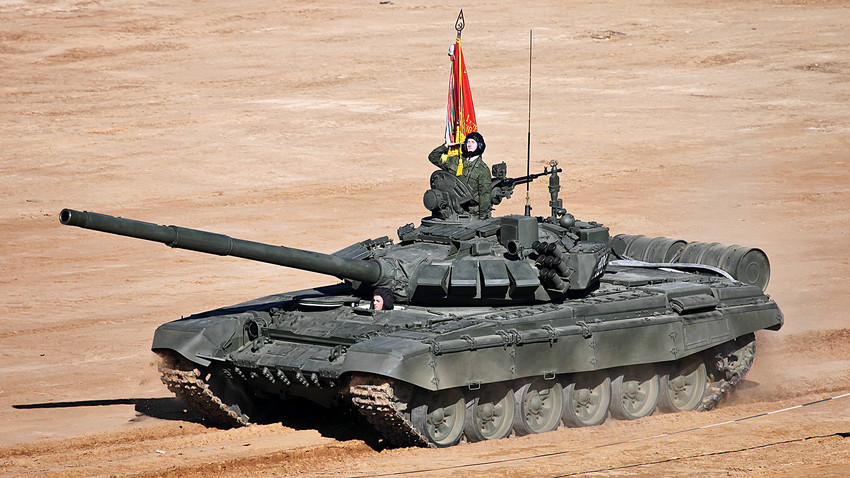Russia’s T-72 tank gets an $3 million upgrade

The latest version of the T-72B3 tank has been updated with a new digital fire control system, “Relic” enhanced dynamic protection and a new 1000 horsepower turbodiesel engine.
Vitaly V. Kuzmin/www.vitalykuzmin.netThe latest version of the T-72B3 tank has been updated with a new digital fire control system, “Relic” enhanced dynamic
The original model of the tank was developed nearly half a century ago, becoming the largest
Today Moscow boasts an army of more than 2,700 tank models. Now equipped with a multi-channel gunner’s sight and an improved 125 mm gun with high powered ammo, the T-72B3 is ideal for urban combat situations.
“Engineers had to modernize nearly 80 percent of the tank’s interior to match modern warfare standards. The manufacturer’s greatest achievement is ensuring it is operational in different extreme weather conditions,” said a source from the industrial military complex.
Russia’s Defense Ministry spent is spending $3 million on each T-72 update. The tank’s armor will be boosted by the new protection system - allowing it to sustain sub-caliber and cumulative armor penetration shells. The beast will also receive firing sensors, and auto-tracking and digital ballistic systems - so it will be able to take into account the wind speed and temperature before firing to make sure it hits each target right on the bull’s eye.
“In fact, the gunner has at his disposal a reliable electronic ‘assistant,’ reducing the
If using any of Russia Beyond's content, partly or in full, always provide an active hyperlink to the original material.
Subscribe
to our newsletter!
Get the week's best stories straight to your inbox